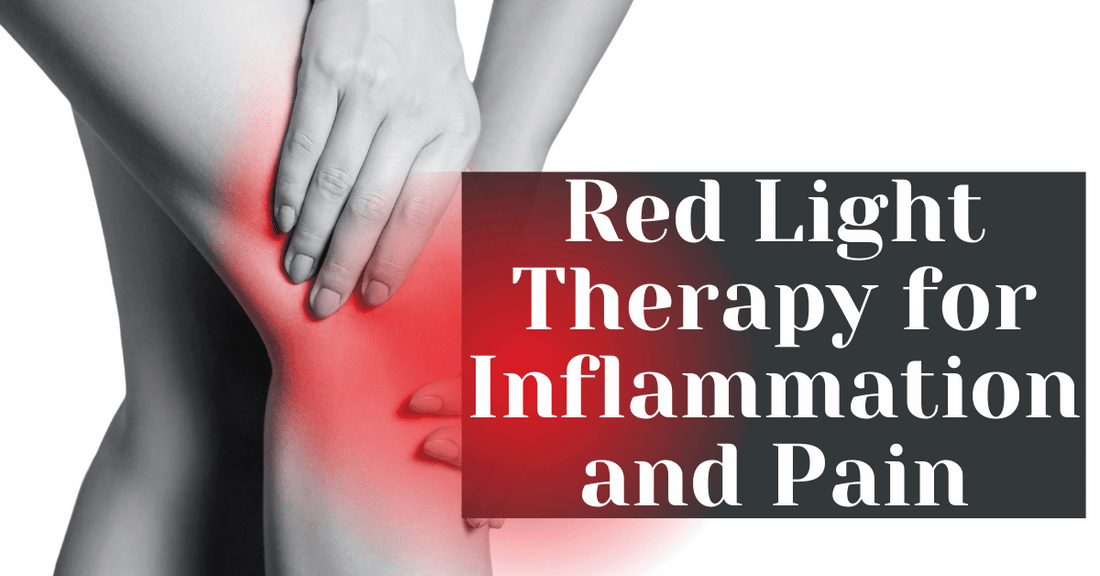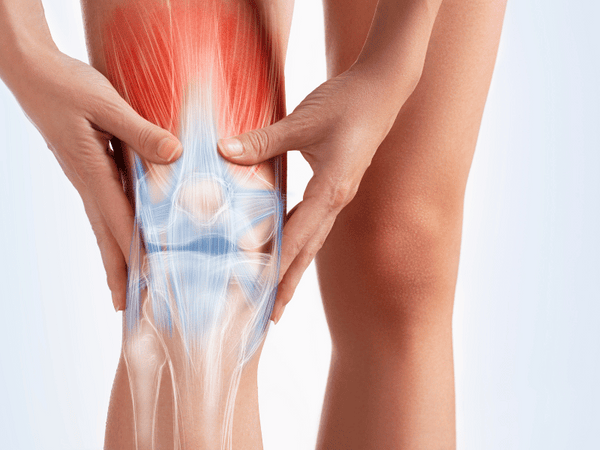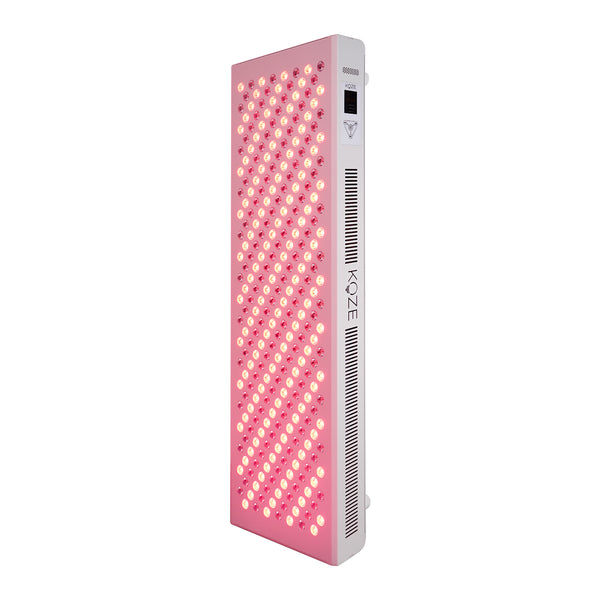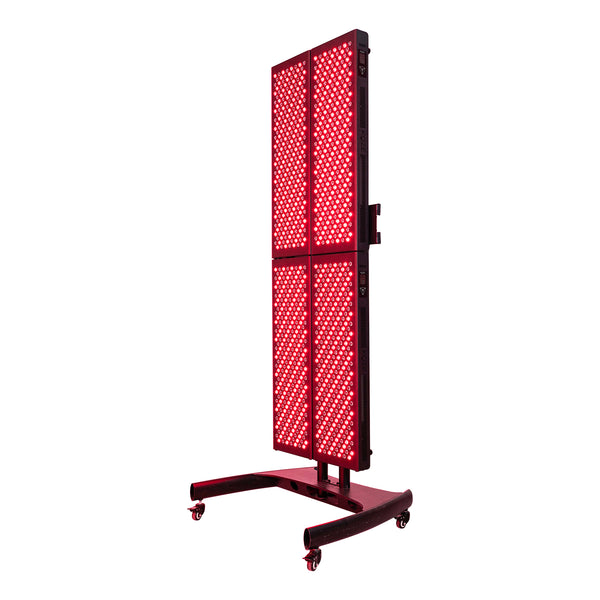
Red Light Therapy for Inflammation and Pain
Red light therapy (RLT) is a technique that uses low-level wavelengths of red light to treat various conditions, ranging from skin issues to muscle recovery. In recent years, it has gained significant popularity due to its non-invasive nature and the promising results reported by both researchers and users. One of the most notable applications of RLT is its ability to reduce inflammation and alleviate pain, making it an attractive option for those seeking alternative or complementary treatments.
The science behind cold laser therapy Red light therapy pain effectiveness lies in its ability to penetrate the skin and interact with cells at a molecular level. By stimulating the mitochondria, the powerhouse of the cell, RLT enhances cellular energy production and promotes healing processes in muscle tissue. This mechanism is particularly beneficial for inflammation and pain relief, as it helps to reduce swelling, improve blood circulation, and accelerate tissue repair.
Understanding how red light therapy works is crucial for anyone considering this treatment. It empowers individuals to make informed decisions about their health and wellness, ensuring that they choose the most appropriate and most effective treatment methods for their specific needs. In the following sections, we'll delve deeper into the science of RLT, its applications for inflammation and pain, and how to incorporate it into your wellness routine for optimal results.
What is Red Light Therapy?
Red light therapy (RLT), also known as the very first low level laser therapy, power laser therapy, low level laser therapy,,-level laser therapy (LLLT) or photobiomodulation (PBM), is a treatment that utilizes specific wavelengths of red and near-infrared light to stimulate biological processes in the body. Unlike more intense laser therapies, RLT delivers a gentle and painless dose of low level laser light alone, which is absorbed by the skin and underlying tissues.
Types of Devices Used for RLT:
1. Handheld Devices: Compact and portable, these are ideal for targeting small areas of the body, such as the face or specific joints.
2. Panels and Lamps: Larger than handheld devices, panels and lamps can cover broader areas, making them suitable for full-body treatments.
3. Beds and Pods: These are designed for whole-body exposure and are often found in spas or specialized clinics.
KOZE™ Mini
KOZE Mini is the perfect solution for Red Light Therapy on the go. This compact, lightweight device is rechargeable and handheld, making it ideal for those who need low level light therapy while traveling or away from home. Its small size allows you to easily carry it in your bag or pocket, ensuring you have access to low level laser light therapy anytime, anywhere. Whether you're looking to improve your skin tone, boost your mental health, or reduce aches and pains, KOZE Mini has got you covered. Plus, it comes with a durable KOZE travel case, providing extra protection for your device during your travels. Experience the convenience of portable low level light therapy now with KOZE Mini. Add the new KOZE Mini Stand
KOZE S Series (BLACK)

The KOZE S Series takes Red and Near Infrared Light Therapy to the next level with its advanced dual-chip LED technology and convenient adjustable stand. This powerful device is specifically designed to provide deeper sleep, rejuvenate your skin, and alleviate muscle aches and joint pain. Its versatility makes it perfect for targeted treatments on the face or other specific areas of the body. Experience the benefits of cutting-edge infrared light therapy with the KOZE S Series, your ideal companion for health and wellness.
KOZE X Series (White)
The KOZE X Series stands out as our flagship model, offering the largest and most potent Red and Near-infrared Light Therapy experience. This custom-built panel is designed to deliver optimal results efficiently, making it perfect for those seeking full-body benefits. Whether you're focused on enhancing workout recovery, improving skin health, or boosting overall wellness, the KOZE X Series has you covered. To cater to your specific needs, you can choose between a Vertical Stand or a Horizontal Stand, ensuring the perfect setup for your laser therapy and sessions. A team member will reach out to confirm your stand choice, with both options available in sleek black. Elevate your health and wellness routine with the unparalleled power of the KOZE X Series.
KOZE X Series - 4X (Black)
The KOZE X Series is our premium offering, delivering the ultimate Red and Near-infrared Light Therapy experience. This large and powerful panel is engineered to provide optimal results that you can see and feel, all within a shorter timeframe. Ideal for full-body performance enhancement, recovery after workouts, skin health improvement, and overall wellness, the KOZE X Series is your go-to solution for comprehensive light therapy. For those opting for the 4-panel setup, the Vertical Stand is the exclusive choice, ensuring a seamless and effective therapy session. Elevate your health and wellness routine with the unparalleled efficiency and power of the KOZE X Series.
How Does Red Light Therapy Work?
At the heart of red light therapy's effectiveness is its ability to penetrate the skin and be absorbed by the cells. The light energy is then converted into biochemical energy, triggering a cascade of cellular processes that enhance healing and regeneration of muscle tissue. This includes increased collagen production, of proteins, reduced inflammation increasing blood flow and circulation, and stimulation of blood flow.
Role of Mitochondria and ATP Production:

Mitochondria, often referred to as the "powerhouses" of cells, play a crucial role in RLT. When red light photons are absorbed by the mitochondria, they stimulate the production of adenosine triphosphate (ATP), the primary energy currency of the cell. With more ATP available, cells can function more efficiently, leading to faster repair and regeneration skin tissue. This boost in ATP production is particularly beneficial for tissues that are inflamed or in pain, as it helps to accelerate the healing process and reduce discomfort.
Red Light Therapy for Inflammation

The Science Behind RLT and Inflammation Reduction
Numerous studies and clinical trials have demonstrated the effectiveness of red light therapy in reducing acute inflammation. A key mechanism is its ability to decrease the production of pro-inflammatory cytokines, which are signaling molecules that contribute to inflammation. Additionally, RLT has been shown to increase the release of anti-inflammatory compounds, further decrease inflammation, and aid in the reduction of swelling acute pain and discomfort.
For example, a study published in the journal Lasers in Surgery and Medicine found that red light therapy significantly reduced pain scores and inflammation in rats with induced arthritis. Another study in the Journal of Physical Therapy Science reported that patients with chronic neck pain experienced a decrease in inflammation and in pain intensity after undergoing RLT treatment.
Conditions Benefited by RLT for Inflammation

1. Arthritis: Both osteoarthritis and rheumatoid arthritis sufferers have reported relief from joint pain and stiffness after RLT treatments. The therapy is believed to reduce inflammation in the joints, improving mobility and quality of life.
2. Tendinitis: This condition, characterized by inflammation and by inflamed tendons, can be debilitating. RLT has been found to speed up the healing process by reducing inflammation and promoting tissue repair.
3. Other Inflammatory Conditions: Beyond arthritis and tendinitis, RLT has shown promise in treating other inflammatory conditions such as bursitis, plantar fasciitis, and even inflammatory skin conditions like psoriasis and eczema.
In summary, red light therapy offers a non-invasive and drug-free option for managing inflammation associated with various conditions. Its ability to modulate inflammatory responses at a cellular level makes it a valuable tool in the treatment arsenal for those seeking relief from chronic inflammation, inflammatory diseases and its accompanying symptoms.
Red Light Therapy for Pain Management
Effectiveness of RLT in Pain Relief
Chronic Pain: Red light therapy has shown promise in alleviating chronic pain conditions, such as fibromyalgia and chronic back pain. By reducing inflammation and promoting cellular repair, RLT can help alleviate the persistent discomfort associated with these conditions.
Post-Surgical Pain: Post-operative recovery often involves managing pain and inflammation. Studies have indicated that RLT can accelerate the healing process and reduce pain levels following surgery, leading to a quicker and more comfortable recovery.
Neuropathic Pain: This type of pain is caused by damage to the nervous system and can be particularly challenging to treat. Red light therapy has been found to improve nerve function and reduce the intensity of neuropathic pain, offering hope to those suffering from conditions like diabetic neuropathy and carpal tunnel syndrome.
How to Use Red Light Therapy for Inflammation and Pain
Choosing the Right RLT Device
Wavelength: The effectiveness of a red light laser therapy or device largely depends on the wavelength of the light used. For inflammation and pain relief, soft laser therapy lights with wavelengths in the range of 630–680 nm (red light) and 810–880 nm (near-infrared light) are typically recommended. It's important to choose a device that emits light within these ranges for optimal results.
Power Density: Also known as irradiance, power density refers to the amount of light energy delivered per unit area. A higher power density means more energy is delivered, potentially leading to more effective treatments. Look for devices with a power density of at least 100 mW/cm² for effective deep tissue penetration.
Treatment Area: Consider the size of the area you need to treat. Handheld devices are suitable for targeted treatments, such as a specific joint or small muscle group. For larger areas or full-body treatments, panels or beds may be more appropriate.
Guidelines for RLT Treatment
Duration: The recommended treatment duration varies depending on the condition and the device used. Generally, sessions lasting 10–20 minutes per area are effective for most conditions. It's important to follow the manufacturer's guidelines and start with shorter sessions to gauge your response.
Frequency: For acute conditions, daily treatments may be beneficial until symptoms improve. For chronic conditions, 3-5 sessions per week are typically recommended. Consistency is key to achieving the best results.
Safety Precautions: While red light therapy is generally safe, it's important to take some precautions:
-
Avoid looking directly into the light source to protect your eyes.
-
Start with shorter sessions and gradually increase the duration as needed.
-
If you have sensitive skin, monitor for any adverse reactions.
-
Consult with a healthcare professional before starting RLT, especially if you have a medical condition or are pregnant.
By following these guidelines and choosing the right red light therapy device, you can effectively use a red light therapy device to manage inflammation and relieve pain, thereby, improving your overall quality of life.
Potential Side Effects and Considerations
Common Side Effects of RLT
Red light therapy is generally considered safe, with minimal side effects. However, some individuals may experience autoimmune reactions:
-
Mild Skin Redness: Temporary redness may occur in the treated area, typically subsiding within a few hours.
-
Slight Warmth: The treated area may feel warm during and shortly after the session, which is normal due to increased blood flow.
-
Eye Strain: Direct exposure to bright red light can cause discomfort or strain, especially for those with light sensitivity.
It's important to note that these side effects are usually very mild form and transient. If you experience any persistent or severe reactions, discontinue use and consult a healthcare professional.
Who should avoid RLT?
While red light therapy is safe for most people, there are certain groups who should exercise caution or avoid it altogether:
-
Pregnant Women: There is limited research on the effects of RLT during pregnancy, so it's advisable for pregnant women to consult their healthcare provider before starting treatment.
-
People with photosensitivity: Individuals with conditions that make them sensitive to light, such as lupus or porphyria, should avoid RLT or proceed with caution under medical supervision.
-
Those with Active Cancer: While RLT can be beneficial for certain cancer-related symptoms, it's not recommended for treating active tumors. Always consult with an oncologist before using RLT if you have a history of cancer.
-
People with Epilepsy: The flashing lights of some RLT devices may trigger seizures in individuals with photosensitive epilepsy.
As with any therapy, it's crucial to consult with a healthcare professional before starting red light therapy, especially if you have any underlying health conditions or concerns.
Comparing Red Light Therapy with Other Treatments
RLT vs. Medications
-
Effectiveness: While medications can provide quick relief from pain and inflammation, their effects are often temporary and may come with side effects. RLT, on the other hand, aims to address the underlying causes of pain and inflammation, potentially offering longer-lasting relief without the same risk of side effects.
-
Safety: Medications, especially those taken long-term, can have adverse effects on the liver, kidneys, and other organs. RLT is generally considered safe, with minimal side effects, making it a suitable alternative for those concerned about the long-term impact of medications.
-
Cost: The initial investment in an RLT device may be higher, but over time, it can be more cost-effective than ongoing medication expenses.
RLT vs. Physical Therapy
-
Complementarity: RLT and physical therapy can often complement each other. While physical therapy focuses on improving mobility and strength, RLT can enhance tissue healing and reduce pain, potentially speeding up the recovery process.
-
Accessibility: Physical therapy usually requires visits to a clinic or therapist, which may not be convenient for everyone. RLT devices, once purchased, can be used at home, offering more flexibility.
-
Approach: Physical therapy often involves active participation and exercises, while RLT is a passive treatment. This makes RLT a suitable option for those who may have limitations that prevent them from engaging in physical therapy exercises.
RLT vs. Alternative Therapies (e.g., acupuncture, massage)
-
Mechanism of Action: Unlike acupuncture, which works by stimulating specific points on the body, or massage, which involves manipulating soft tissues, RLT uses light to trigger biological changes at the cellular level.
-
Evidence Base: While acupuncture and massage have been used for centuries and have their own sets of benefits, RLT has a growing body of scientific research supporting its efficacy, particularly in the areas of inflammation and pain management.
-
User Experience: RLT is a non-invasive, painless treatment that can be easily administered at home, making it a convenient option for those who prefer a more hands-off approach to therapy.
Incorporating Red Light Therapy into Your Wellness Routine
Integrating RLT with Exercise and Nutrition
Exercise Compatibility: Red light therapy (RLT) can be an excellent complement to an exercise routine. By using RLT before workouts, you may experience enhanced muscle performance and reduced risk of injury. Post-exercise RLT can help accelerate recovery, reducing muscle fatigue and soreness. Integrating RLT with regular physical activity can optimize health outcomes and performance.
Nutritional Synergy: Nutrition plays a critical role in inflammation and pain management. Anti-inflammatory foods, such as fatty fish, leafy greens, berries, and nuts, can synergize with RLT to further reduce inflammation. Additionally, maintaining a balanced diet rich in antioxidants can enhance the cellular benefits of RLT, promoting overall health and well-being.
Tips for Maximizing the Benefits of RLT
1. Consistent Use: For the best results, incorporate RLT into your daily routine. Consistency is key, as the cumulative effects of red light therapy are most noticeable with regular use over time.
2. Optimal Timing: Experiment with timing to find what works best for you. Some find RLT most beneficial when used in the morning to boost energy levels, while others prefer evening sessions to enhance recovery and relaxation.
3. Skin Exposure: Ensure that the area of the body you're treating is fully exposed to the light. Clothing can block the light, reducing effectiveness. Clean skin, free of lotions or creams, allows for optimal light absorption.
4. Stay Hydrated: Hydration is important for overall health and can enhance the benefits of RLT. Drinking plenty of water helps maintain optimal cellular function and facilitates the detoxification processes stimulated by red light therapy.
5. Combine with Mindfulness: Consider combining your RLT sessions with mindfulness practices such as meditation or deep breathing. This not only enhances relaxation but may also improve the body's response to the therapy.
6. Consult Healthcare Providers: If you're using RLT to address specific health concerns, keep your healthcare provider informed. They can offer guidance on how RLT fits into your overall treatment plan.
FAQs about Red Light Therapy for Inflammation and Pain
Q1: How long does it take to see results from red light therapy for acute inflammation, and pain?
A1: The time frame for seeing results can vary depending on the individual and the condition being treated. Some people may notice improvements in pain and inflammation from inflammatory disease within a few sessions, while others may take several weeks of consistent treatment to experience significant benefits.
Q2: Can red light therapy be used chronic low back pain alongside other pain management treatments?
A2: Yes, red light therapy can often be used in conjunction with other pain management treatments, such as physical therapy, medication, and alternative therapies like acupuncture. It's important to consult with a healthcare professional to ensure that the combination of treatments is appropriate for your specific condition.
Q3: Are there any areas of the body that should not be treated with red light therapy?
A3: Red light therapy is generally safe for most parts of the body. However, it's advisable to avoid direct exposure to the eyes, as the intense light can be harmful. If you have any concerns about specific areas, it's best to consult with a healthcare professional.
Q4: Is red light therapy safe for all skin types?
A4: Yes, red light laser therapy, is considered safe for all skin types. Unlike UV light, red level laser light therapy does not cause skin damage or increase the risk of skin cancer. However, if you have a skin condition or sensitivity, it's a good idea to consult with a dermatologist before starting near infrared level laser light therapy treatment.
Q5: How often does red light therapy work and should I use red light therapy for the best results?
A5: The frequency of red light therapy sessions can vary depending on your goals and the device you're using. For inflammation and pain management, most protocols recommend low level laser light treatments ranging from daily to three to five times a week. It's important to follow the guidelines provided with your specific device and to listen to your body's response to the next low level laser near infrared light treatment or therapy.
Q6: Can red light therapy help with chronic conditions like arthritis or fibromyalgia?
A6: Yes, red light therapy has shown promise in reducing joint pain and inflammation associated with chronic conditions such as arthritis and fibromyalgia. While it may not cure these conditions just a symptom less, it can be a valuable tool in less pain research managing symptoms and improving quality of life.
Q7: Is there any maintenance required for red light therapy devices?
A7: Most red light therapy devices require minimal maintenance. Keeping the device clean and storing it properly when not in use is generally sufficient. Always refer to the manufacturer's instructions for specific care and maintenance guidelines.
Conclusion
Red light therapy (RLT) has emerged as a promising treatment for managing inflammation and pain, offering a non-invasive and drug-free alternative to traditional pain management methods. By harnessing the power of specific wavelengths of light, RLT can stimulate the body's natural healing processes, reduce inflammation, and alleviate pain. This therapy has been shown to be beneficial for a variety of conditions, including arthritis, tendinitis, chronic pain, and post-surgical recovery.
Before embarking on a red light therapy regimen, it is crucial to consult with healthcare professionals. This ensures that RLT is appropriate for your specific condition and that it is used safely and effectively. Healthcare providers can also offer guidance on integrating RLT with other treatments for a comprehensive approach to pain management.
In the broader context of holistic health management, red light therapy represents an exciting avenue for enhancing well-being. Its ability to promote healing, reduce inflammation, and alleviate pain aligns with the principles of holistic health, which emphasize the importance of addressing physical, emotional, and mental aspects of health. As research continues to uncover the full potential of RLT, it is poised to become an increasingly valuable tool in the pursuit of optimal health and wellness.



